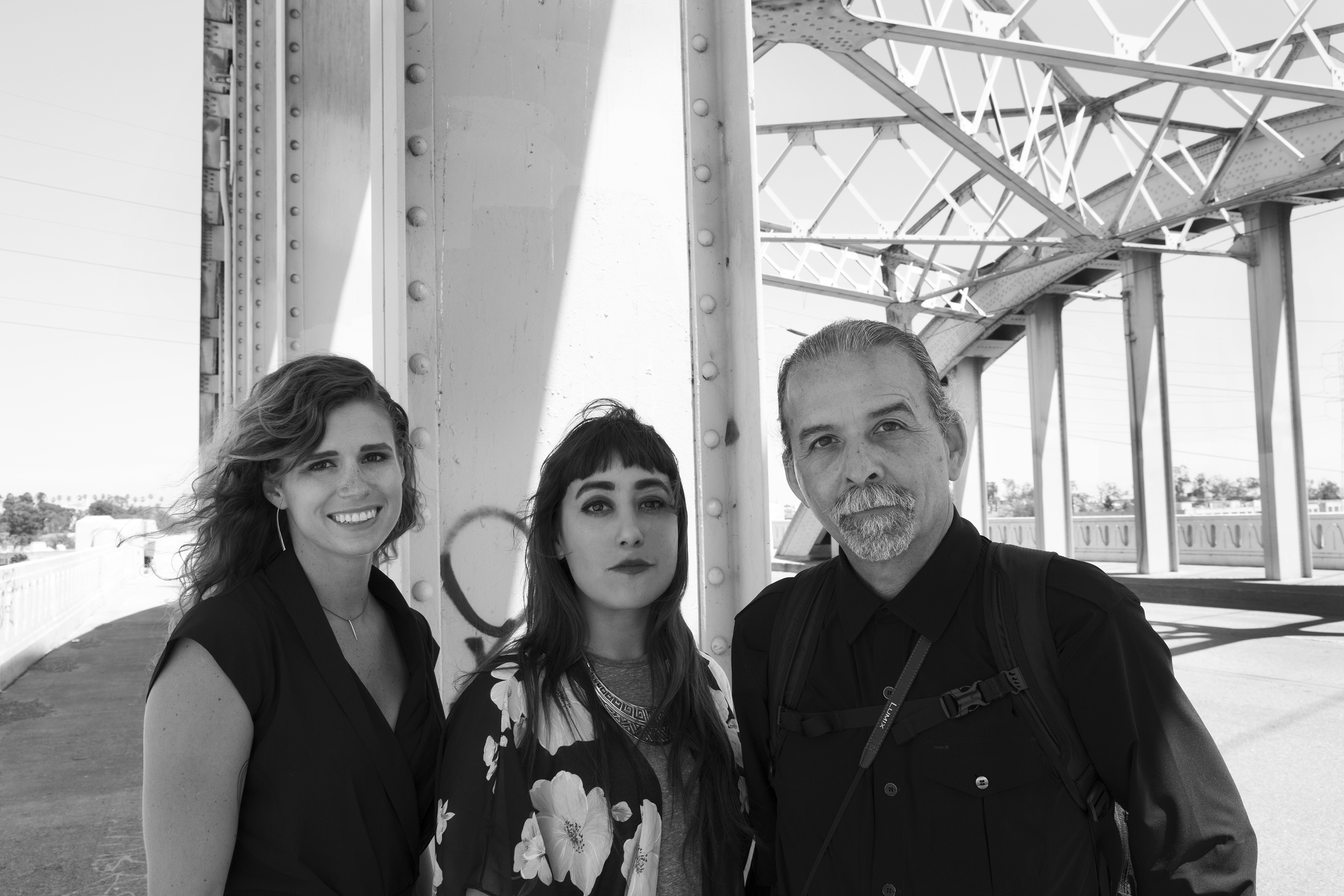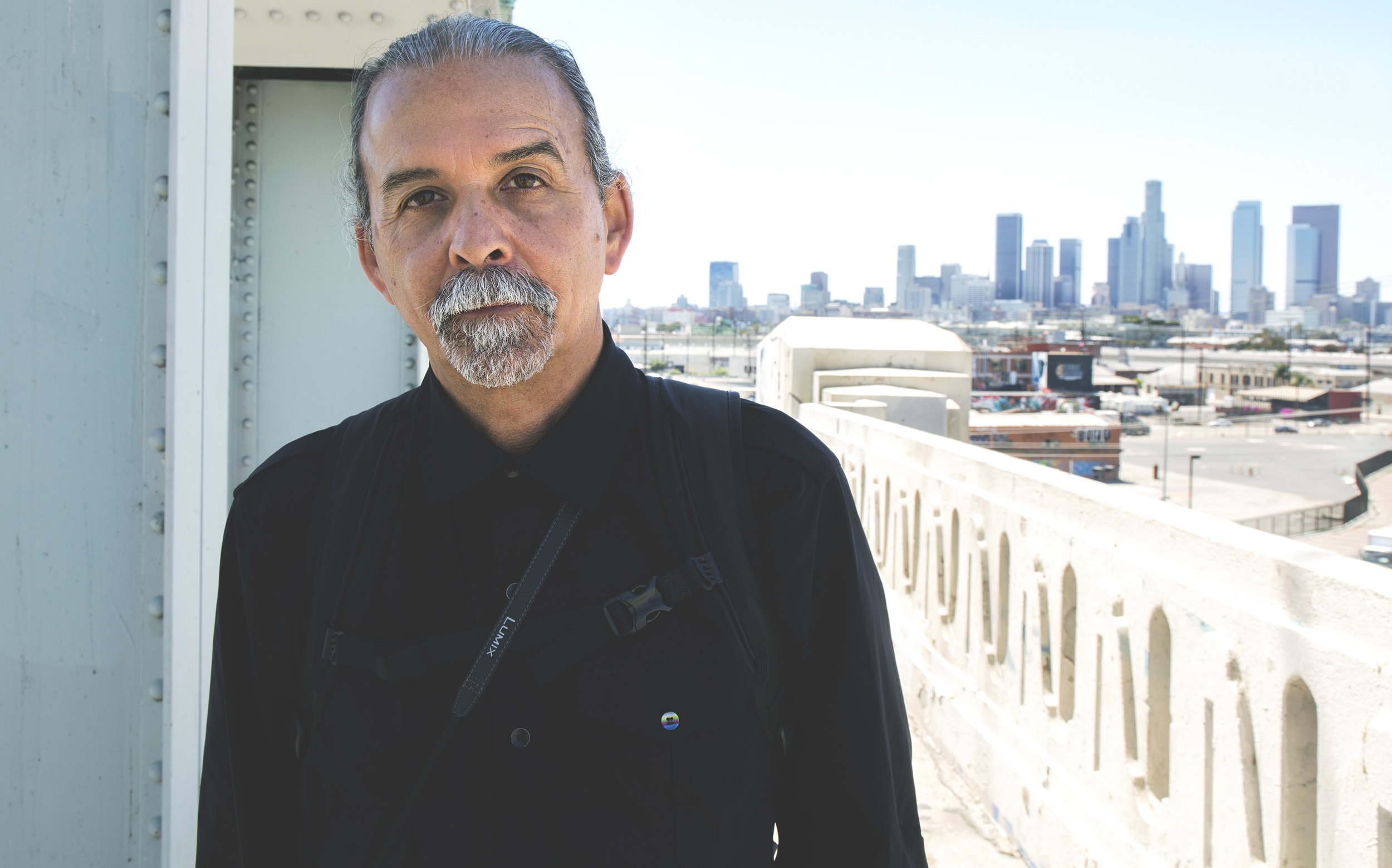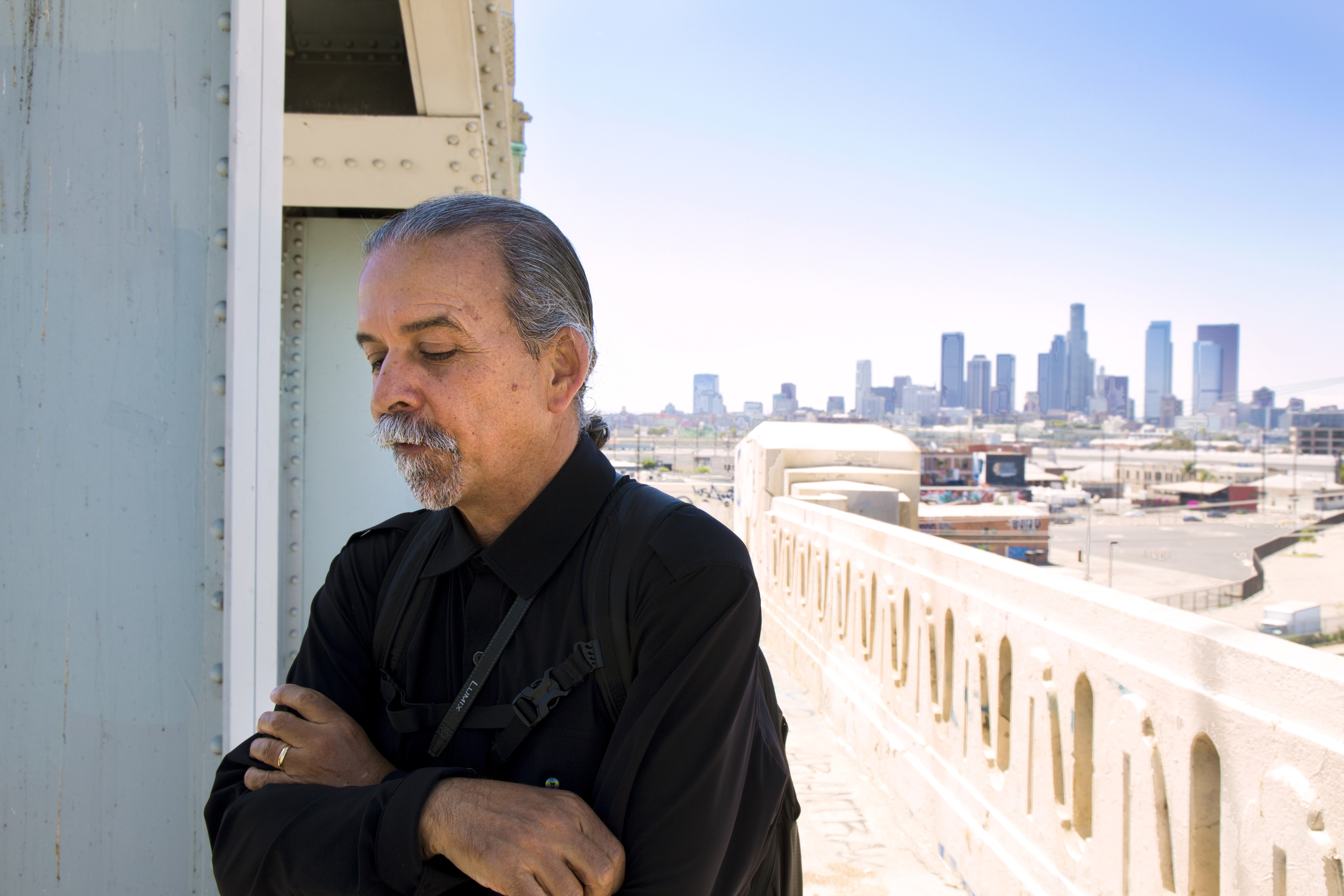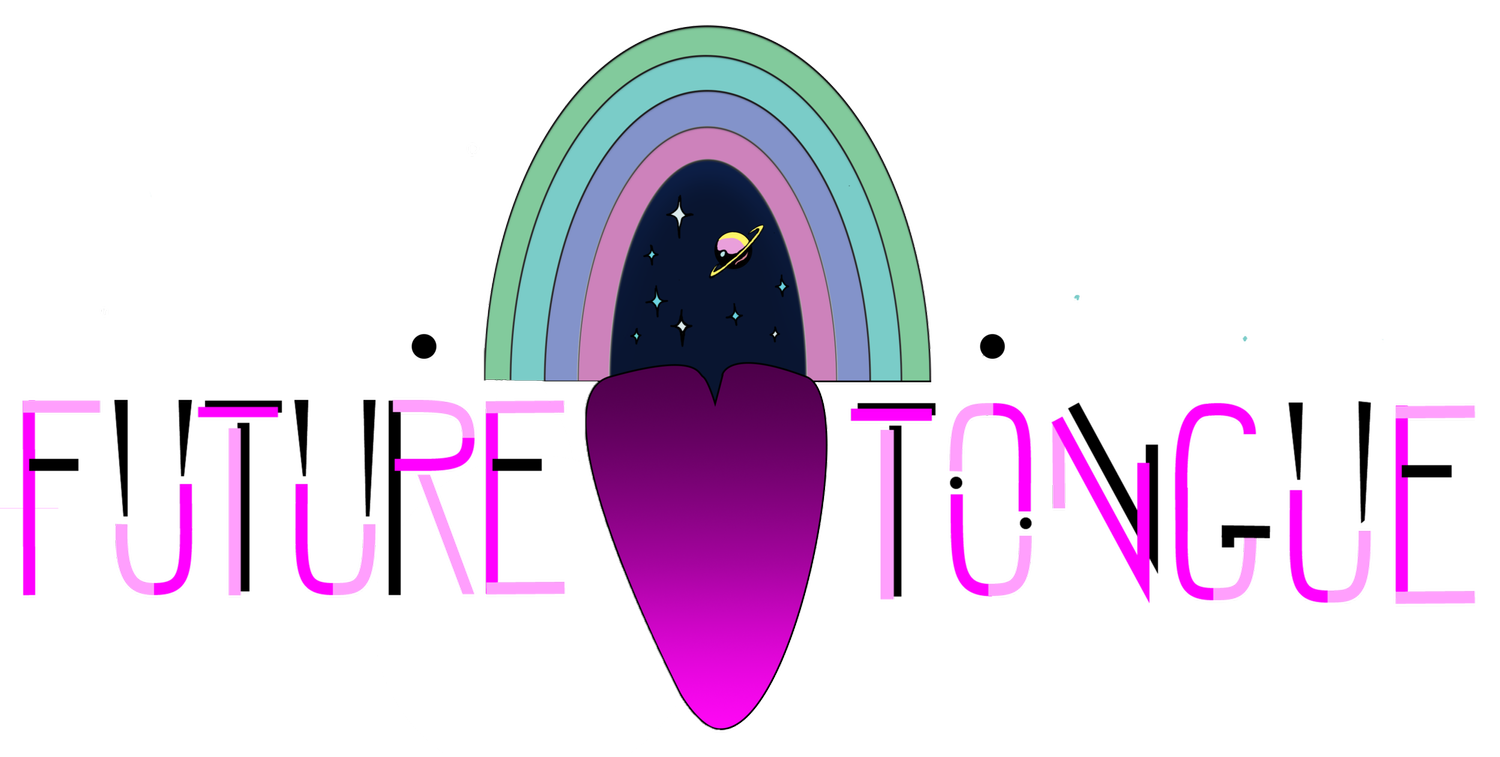HARRY GAMBOA JR
LOS ANGELES
After a long ride on the bus from his home in Santa Monica, we met Harry Gamboa Jr. at the site of his recent project, the Sixth Street Bridge in Downtown, Los Angeles. Harry is a firm believer in public transportation. It allows him to connect with the city. Harry uses the vast landscape of Los Angeles as his studio. His latest project has been to document this historic bridge before it is demolished. We realize that, if you were to spend just five minutes with Harry Gamboa Jr. you would hear a great number of humorous anecdotes, bizarre historical facts, and plenty of offbeat film suggestions. Harry is just turning 64 and has spent his whole life fighting to share his idea’s through essays, film, photography and performance. As a Chicano artist, he has been confronted with prejudice and racism since he was a child, and has used his talent to work to bring awareness and commentary on these subjects.
Follow more of Harry Gamboa Jr.'s work here.
Interview by Britt Harrison, Photography and Videography by B. Justine Jaime
Posted on November 6, 2015
ONE THING THAT I HAVE LEARNED
I have experienced a series of assaults in my life. Traumatic assaults, social assaults, physical assaults, and then media assaults. I was present for the first stereo and transistor radio, which allowed for the mobility of information. Then the color television, these technologies were really just delivery systems that were designed to persuade people, to believe in things and to possess things as a consumer. It would isolate you as an individual. You no have sense of commonality with other people, even though you have everything in common. So I decided to make things instead of reacting to things. One of the things that I learned from my experiences is that it’s much more important to be alive, to be healthy, to be creative and to share ideas with people. To make sure that people have a sense of self-value.
THE CITY IS MY STUDIO
I find that I do work wherever I’m at. I’ve never had a studio. The city is kind of my studio. I either write, do photography, do video or perform, or do all of them at once. Every once in a while I’ll meet somebody, and they will stay as an afterimage. Then without even trying, an entire narrative has been thought out for them already. So I’ll put them in a story.
VIRTUAL VÉRITÉ
My current group is called Virtual Vérité. It responds to the immediacy of certain issues, and the connection of the historic significance of certain objects or ideas. It’s the idea of all of it being transitional, the idea of capturing a moment or two and utilizing these images as signifiers of our time. Also the performers are very important, because they are all hand picked and they’re all the brightest people I’ve met; whether they have a degree or not. I bring people in and mix and match them together, which creates a group that operates autonomously, but it requires all the energy to create an attitude, mood and image. They’re really self-motivated and it evokes a sense of power. They themselves serve as icons for what it takes to survive. It’s all about how do you survive and build a practice for yourself in an environment that is built to destroy you psychologically, socially, economically and even culturally. How do you maintain all of that in a way that you’re still having fun? Fun is the first thing that fascists will destroy, because once you’re no longer having fun, it’s much easier to break you down.





PICKING UP THE CAMERA
I was taken in by photography. In 1972 I bought my first camera. As it turns out, the photographs I took with that camera had the members of ASCO in it. I was pretty much self-taught. I got a good response initially from my work and it just seemed that I had a good way of being able to communicate visually through photography.
EDUCATION
I have never been formally educated. I was first introduced to reading in public school. They were actually still using text that was published in the 1920’s and it was the 1950’s. So I found that the more direct route to learning English was to read comic books. All these stories dealt with social movements, dictatorships, nuclear power, warfare, this idea of having people eliminated, or enslaved. I decided that what they were teaching in school was not sufficient for my learning curve, so instead I would hop on a bus to go buy magazines and newspapers. This was not a good time for a young boy to be alone in the city during school hours. So at the end of the sixth street bridge there was an orphanage. I thought if I could gather some wayward boys to join me, then I could go explore the city. I had seen some very beautiful moments of brutality or death. I think I witnessed a little bit too much as a young person, but by the time I was in high school I was able to connect with a handful of people who were part of these social movements that were going on in the 1960’s.
THE FRAMEWORK
I grew up in Boyle Heights. A lot of my father’s generation had fought in WWII and their younger brothers, many of them had fought in the Korean War. They were all citizens and had fought to defend this country, so this notion that their children would be subjected to racist taunts, or to endure poor performing schools and social programs that would engender poverty didn’t seem to coincide with what they thought they were fighting for in the first place.
As it turns out they were at the earliest stages of twenty-first century capitalism, which is a system that makes sure people are not cared for, makes sure they don't earn enough money, makes sure that public education is lowered, and that controls exposure to their own literature, language and culture. The people that I grew up with fought against fascism, so I was taught to not accept any level of fascism either outside or inside this country.
FUN FACT
I was born in 1951 at the onset of the nuclear testing in Nevada. I basically, physically, have experienced the effects of more than 1,000 nuclear bombs. They were actually releasing radiation into the air in Los Angeles because they were doing feasibility tests to learn if a nuclear war would work out and see what would be the percentage of people that would survive.
MAKE ART OR SELL DONUTS
I’ve had this really long history of media attention, but there is no infrastructure of support for Chicano artists. International artists are supported by their home countries and this country operates on a different premise. It’s all up to the market, so you have to find a way to survive. You’re either making art or selling donuts, which one is going to bring you a greater income? You have to find a way to make money that some way connects to your own integrity. Sometimes your integrity doesn't have a cash value.
THE ART MARKET
I’ve witnessed the disparity of wealth distribution in the arts. I had a very interesting experience with the Getty. I was in this major show that they spent millions and millions of dollars on and I signed off to have my work used for free for publicity, but I didn't realize that that also meant their co-funders could also use my work. So Bank of America had my work appear on all their ATM’s, and as hard as I tried to type my last name into the ATM, it never once gave me a twenty.
LOS ANGELES
One of the things about Los Angeles, is that there is no respect for historical landmarks. Here you have a building and a few years later they’ll tear it down and build a parking lot, then they’ll build a minimart, then a few years later they’ll build another parking lot. Nothing ever has a sense of permanence.
Part of that is because LA is built on a desert. I had a show that was constructed around this idea of an urban desert and the urban environment functions in the same way as desert fauna and flora. So to survive in this harsh environment you have to look like you’re somewhat dangerous, or appear invisible. I’m more afraid of things that appear more camouflaged, because those are the things that usually have venom in them. You have to be ready to move, there’s no real opportunity to blink here. Los Angeles is never static, which is why I find it to be a great and exciting place. I encourage people to come here, not that they will stay, but if you can make it here you can make it through anywhere.


